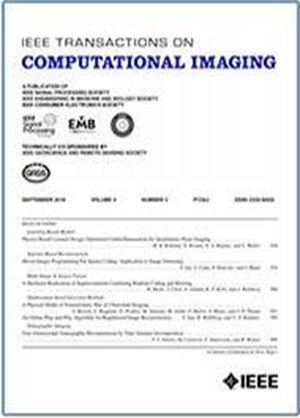DAMMER: Direct Adaptive Multi-Resolution MEsh Reconstruction From X-Ray Measurements
IF 4.8
2区 计算机科学
Q2 ENGINEERING, ELECTRICAL & ELECTRONIC
引用次数: 0
Abstract
X-ray computed tomography (XCT) reconstructs a scanned object using measured projection data, with the object typically represented on a voxel grid during the reconstruction process. However, since material interfaces typically do not align with voxel boundaries, a voxel representation inherently suffers from partial volume effects. This paper presents DAMMER: a method that reconstructs a multi-resolution triangle mesh to represent the attenuation values of a piecewise homogeneous object, often encountered in industrial CT, based on X-ray projection data of this object. DAMMER progressively reconstructs this mesh to match the object. For this, different homogeneous segments are created based on an agglomerative hierarchical clustering procedure, which targets a compact object description by optimizing a weighted sum of projection difference and number of edges between different segments. These segments are progressively optimized to match the homogeneous materials in the object. Simulation and real data experiments show that DAMMER generates significantly more accurate reconstructions compared to pixel grid reconstruction methods, outperforming conventional voxel-based methods in capturing the true geometry of complex material boundaries.DAMMER:从x射线测量直接自适应多分辨率网格重建
x射线计算机断层扫描(XCT)使用测量的投影数据重建扫描对象,在重建过程中,对象通常在体素网格上表示。然而,由于材料界面通常不与体素边界对齐,体素表示本身就受到部分体积效应的影响。本文提出了DAMMER:一种基于工业CT中经常遇到的分段均匀物体的x射线投影数据重建多分辨率三角形网格来表示该物体的衰减值的方法。DAMMER逐步重建这个网格以匹配对象。为此,基于聚类层次聚类过程创建不同的同质段,该过程通过优化不同段之间投影差和边数的加权和来实现紧凑的目标描述。这些片段被逐步优化,以匹配物体中的均匀材料。仿真和实际数据实验表明,与像素网格重建方法相比,DAMMER生成的重建结果更加精确,在捕获复杂材料边界的真实几何形状方面优于传统的基于体素的方法。
本文章由计算机程序翻译,如有差异,请以英文原文为准。
求助全文
约1分钟内获得全文
求助全文
来源期刊

IEEE Transactions on Computational Imaging
Mathematics-Computational Mathematics
CiteScore
8.20
自引率
7.40%
发文量
59
期刊介绍:
The IEEE Transactions on Computational Imaging will publish articles where computation plays an integral role in the image formation process. Papers will cover all areas of computational imaging ranging from fundamental theoretical methods to the latest innovative computational imaging system designs. Topics of interest will include advanced algorithms and mathematical techniques, model-based data inversion, methods for image and signal recovery from sparse and incomplete data, techniques for non-traditional sensing of image data, methods for dynamic information acquisition and extraction from imaging sensors, software and hardware for efficient computation in imaging systems, and highly novel imaging system design.
 求助内容:
求助内容: 应助结果提醒方式:
应助结果提醒方式:


